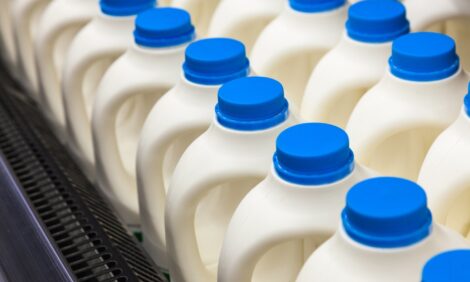



Dairy Producers Increasing Pasture Efficiency
NEW ZEALAND - New Zealand farmers are using less land and less labour to produce a kilo of milk or meat than they were a decade ago, according to the Ministry for Primary Industries.MPI’s Strategy team has investigated input and output trends in pastoral farming. They used select physical inputs and outputs to give a picture of dairy and drystock farmers as managers of these resources.
The report sheds light on intensification in New Zealand pastoral farming and the relationship with productivity, says MPI Strategy Director James Palmer.
“When people talk about intensification of farming, they tend to refer to increasing animal numbers and fertiliser use per hectare.”
“But in practice, these measures seem too simplistic to capture how pastoral farm management is changing. Farming has become increasingly sophisticated, and the data and analysis needs to be as well.”
The team used statistics from Statistics New Zealand, Reserve Bank, Livestock Improvement Corporation and the Beef and Lamb Economic Service, along with MPI data. However, the data were limited and the analysis goes back to 2002.
Figures show that sheep/beef farming continues to be the dominant agricultural land use in New Zealand, occupying more than four times the area used by the second largest, dairying.
Data showed, however, that increasingly dairy support activity occurs on properties not classed as dairy farms. Between 2002 and 2009, the number of dairy cows being run on sheep/beef properties increased by 44 percent.
Overall, the MPI team calculated that the average number of dairy cattle run per hectare increased by about five per cent between 2002 and 2009. Dairying has also increased production per hectare and production per animal.
During the same period, the average number of sheep run per hectare decreased by about 11 per cent and beef cattle decreased by eight per cent, while average beef and lamb production per hectare went down slightly. Extreme weather events and expansion of dairying on to typically flatter land likely had some impact. However, average production per animal has increased.
Fertiliser use by pastoral farmers, both per hectare and per unit of production, fell significantly between 2002 and 2009. The only exception was nitrogen use on dairy farms, where there was a slight increase.
“Challenging economic conditions influenced spending on fertiliser, while farmers also adopted more sophisticated management of effluent and used more bought-in feed which introduces nutrients to the farm system,” says Mr Palmer.
Between 2002 and 2009, the labour used per hectare and per unit of production decreased significantly on all types of pastoral farms, indicating efficiency gains in farm management including increasing automation.
And between 2003 and 2009, total debt per hectare increased by around 140 percent for both dairy and sheep/beef. Total debt per kg of output increased by similar margins.
“Overall, the approximate debt ratio is much higher in the dairy industry than in the sheep/beef industry, but the sheep and beef industry’s estimated debt ratio appears to be growing faster, reflecting low returns,” says Mr Palmer. “The reasons behind this need further investigation, for example to determine what could be considered as investment in on-farm development.”
A wider question that remains is how trends and progress of these sectors should be monitored in future, he says.
TheCattleSite News Desk


